It’s no secret that the performance of standard display advertising tactics has been declining over the years. The effectiveness of this advertising channel has dropped as readers focus more on the content they desire on the web page. They have seemingly become immune, and can block out the ads and focus on the blog or article they clicked on.
Some of the challenges display advertising has faced over the years include banner blindness, irrelevant targeting, ad-blockers, and wasteful spending. Up to 56% of ad spend has been lost to fraud over the years, which has certainly not helped the display advertising medium. This wasteful spending has made the practice lose its credibility and further reduced the effectiveness of display ads.
If you can believe it, the first banner ad was released in October 1994 on hotwired.com. The initial banner ads that followed were successful for one reason: they were part of an integrated marketing strategy. In fact, over 40 percent of individuals who saw the ads clicked on them!! Compared to today’s numbers, only around four people out of every 10,000 click on display ads. How did this paradigm shift happen in just 25 years?
The first ads were focused on the customer and addressing their needs. As the years progressed, display ads became commonplace, seen on every website a user visited. The ads demanded attention rather than answering the customer’s needs. The newest trends in design were applied to the ads, but they still missed the mark.
Banner blindness is probably the biggest challenge for traditional display ads. This term refers to the reader’s ability to completely gloss over ads that are displayed on the web page. Over the years, readers have become aware of marketing efforts designed to catch their attention. Now, they simply block out anything that doesn’t relate to the information they seek.
To counter banner blindness, new avenues of advertising have been implemented.
- Native advertising is used to display ads in a natural way. They are blended into the content and do not come off as salesy. This helps provide an optimal user experience.
- Contextual advertising combines keyword targeting and page relevancy. They are automated display ads that aim to match advertising messaging to the content the user is consuming.
- Inbound marketing attempts to drive traffic to a company’s website by providing answers to problems customers are facing. The goal is to build trust without sounding like a salesperson.
These strategies are thought to be more effective than traditional banner ads, but the train doesn’t stop here. Customers may still avoid any ads or information provided because it is not always 100 percent relevant to their needs and desires.
Dynamic Ads To The Rescue
Dynamic ads are the way of the future. It takes the best parts of all previous display advertising tactics and creates the most effective method of reaching customers.
Inventory marketing is directly aided by dynamic ads. Based on the inventory you have available, creative and copy components can be used to display ads to your audience. This is especially helpful for those who have already visited your website or product pages. You can retarget these individuals with better display ads.
With dynamic ads and inventory marketing, you can expect more hyper-relevant, personalized ads reaching interested consumers. This leads to higher quality traffic to your website and better conversion rates than display advertising.




